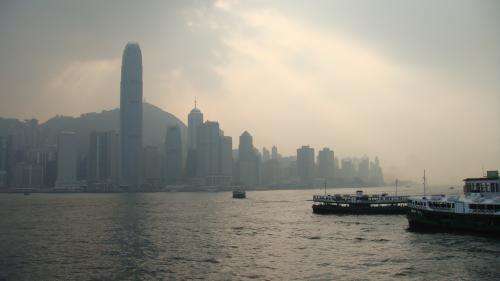Air quality simulations focus on world's growing cities

A West Australian researcher has played a key role in creating a model that simulated a high-level ozone event at a Hong Kong mountain summit.
Associate Professor Sam Saunders from UWA's School of Chemistry and Biochemistry worked with Hong Kong Polytechnic and Nanjing Universities and the Guangzhou Institute of Geochemistry on the study as part of an ongoing collaboration.
"My research interests are in determining anthropogenic impacts on air quality to aid in developing air pollution control strategies," she says.
"Much of my research involves the use of computer models to study atmospheric chemistry processes in detail.
"They are constructed using a combination of detailed chemical mechanisms, laboratory and field measurements and emissions data."
As part of the original concept team, A/Prof Saunders was instrumental in the development of a Master Chemical Mechanism (MCM) for use in these models.
The MCM details gas-phase chemical processes involved in the tropospheric degradation of several primary-emitted volatile organic compounds (VOC).
In this study, the research team worked to develop a new airshed model constrained with observational data obtained during an extended field measurement campaign from concurrent observations at Tai Mo Shan and Tsuen Wan in Hong Kong.
Through the modelling it was found vehicle emissions and power generation were the dominant VOC source contributing to the formation of ozone.
"There needs to be concerted and continuing efforts in reducing vehicle emissions through a number of different measures, such as reducing vehicle dependency, alternative fuels, testing and penalties, compliance and vehicle emission-related policies," A/Prof Saunders says.
And while there has been a significant increase of episodic high ozone levels in rapidly developing regions of the world, such as the Pearl River Delta and Beijing in China and other global megacities, she warns WA is not immune from the danger of poor air quality.
The professor's research team has also constructed airshed models for the WA environment to better understand the drivers for photochemical air pollution in the state, helping with future management strategies.
"Although WA currently experiences only a few high ozone events per annum, the rate of population growth and development and projected increases in vehicle load over the next decade means that vehicle sources will remain a significant contributor to air pollution," she says.
The WA study was presented at the 20th International Congress on Modelling and Simulation conference in December.
More information: S.H.M. Lam, S.M. Saunders, H. Guo, Z.H. Ling, F. Jiang, X.M. Wang, T.J. Wang, "Modelling VOC source impacts on high ozone episode days observed at a mountain summit in Hong Kong under the influence of mountain-valley breezes," Atmospheric Environment, Volume 81, December 2013, Pages 166-176, ISSN 1352-2310, .
Journal information: Atmospheric Environment
Provided by Science Network WA
















